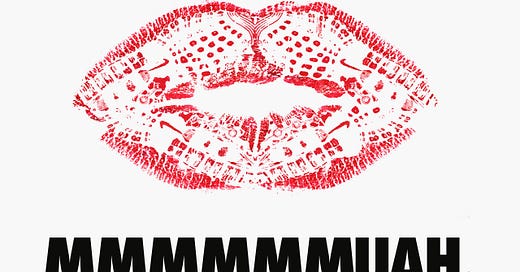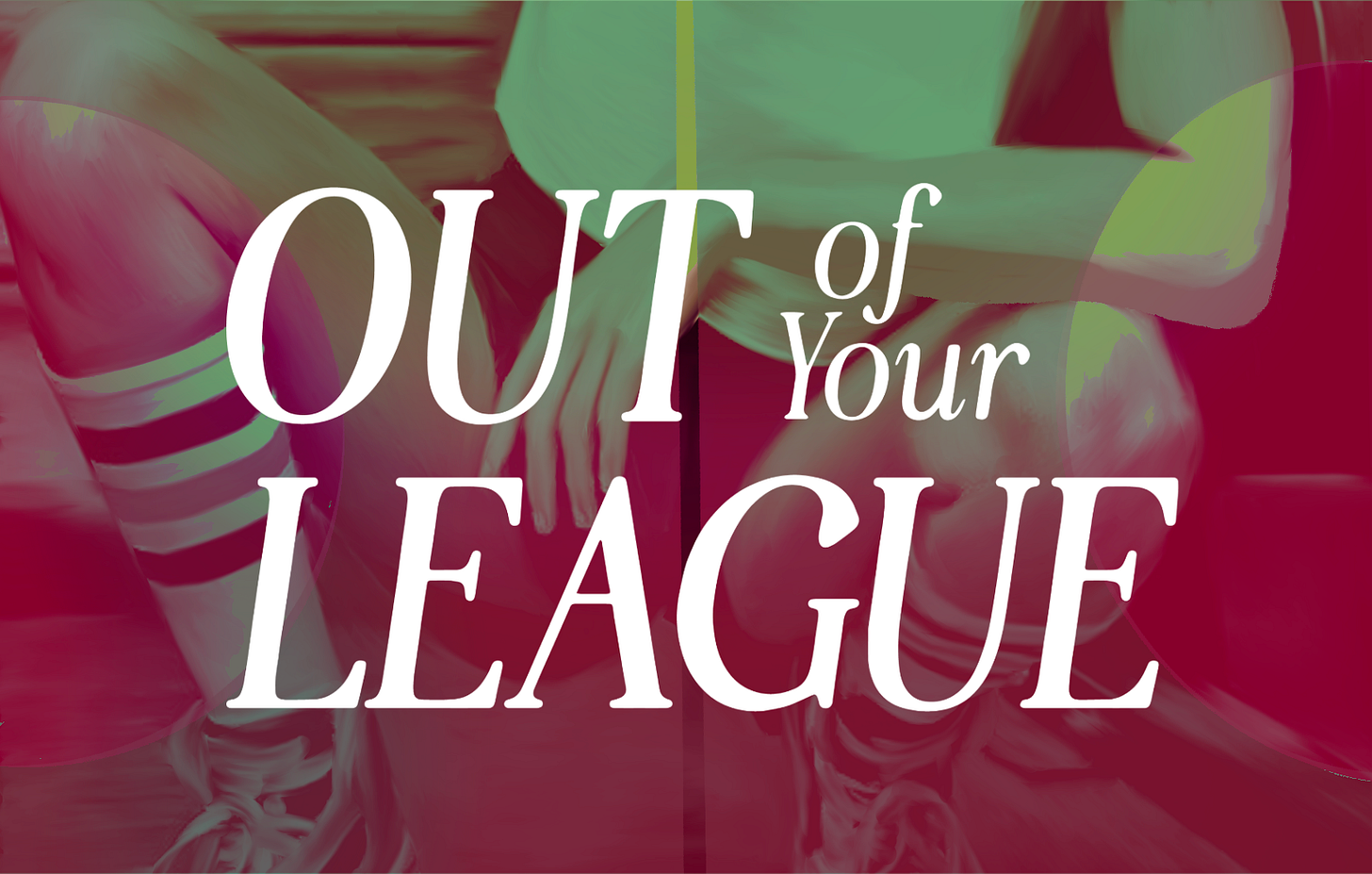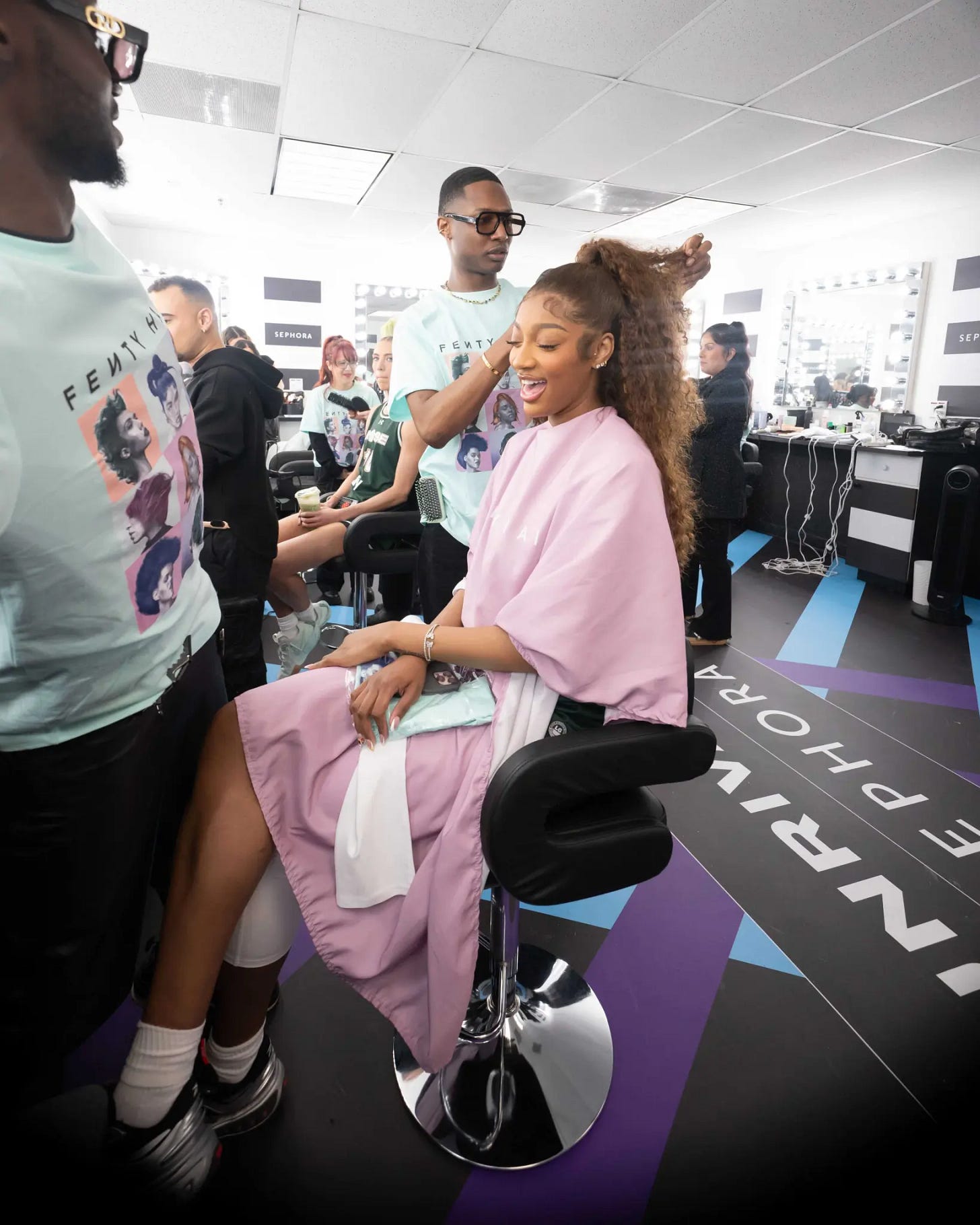athlete beauty campaigns in the age of transvestigations
These two things — traditional beauty brands capitalizing on women's sports, while gender-marginalized athletes come under systematic attack — cannot be separated.
Thank you so much for being here! I am a full-time freelance writer and paid subscriptions to this newsletter allow me to continue to do work like this. You can upgrade here:
Also, Unrivaled debuts tonight! You can read more about all the lesbians in the league here, and paid subscribers can join us in the chat tonight at 7 PM ET for a live thread for tonight’s debut games!
This week, the House passed a bill to ban trans girls from playing girls’ scholastic sports. International federations are continuing to make policies that ban trans women from elite women’s sports as you read this. And clothing companies have launched so that you can wear transphobia on your literal sleeve.
Meanwhile, women athletes are having a moment in the beauty industry. Angel Reese and Gabby Thomas are on the cover of Vogue. Nike is collaborating with makeup artist Isamaya Ffrench. Sephora is partnering with Unrivaled, as well as the Toronto Tempo WNBA expansion team. Glossier and Skims have already been partnered with the WNBA itself. E.l.f. Cosmetics sponsors the Billie Jean King Cup tennis tournament, as well as a girls’ high school wrestling competition.
These two things — traditional beauty brands capitalizing on women's sports, while gender-marginalized athletes come under systematic attack — cannot be separated.
While these marketing campaigns look progressive under capitalist framing, the reality is much more complicated. When examined against the current political climate, in which gender panic and “transvestigations” in women’s sports abound, this platforming of traditional femininity by female athletes becomes something more sinister, echoing the Victorian ideals that have policed women’s sports for over a century.
The idea that sports would make women “mannish” goes back to the turn of the 20th century. The 1992 film A League of Their Own, based on the true story of the World War II-era All-American Girls Professional Baseball League, highlighted the charm school and forced feminization that players had to go through to take the field. These beauty standards existed to keep the women from being perceived as lesbians (which many of them were), and aligned with AAGPBL owner Philip K. Wrigley’s motto: “Play like a man, look like a lady.” As recently as 2013, the WNBA held makeup classes for its rookies to help them appear more feminine to the public eye. That fear of unfeminine women is tangled in racism, homophobia, transphobia, and misogyny.
“Female athletes of the 1920s to 1940s were frequently described by journalists as talented athletes who still possessed their ‘feminine charm’ or who still ‘hoped to find a husband,’” Donna L. Halper, an associate professor of communication and media studies at Lesley University, told Racked in 2018. “Wearing makeup was undoubtedly part of the effort to say to the people of that era that female athletes were still [stereotypically] female — ‘Look, even though she’s an athlete, she still loves to wear makeup and a dress, so don’t worry!’ It was an effort to allow the female athlete to play sports without being perceived as too threatening.”
While beauty requirements feel regressive through a modern lens, they still permeate our culture, most notably through the beauty and makeup campaigns popping up all over the media landscape. Take Nike’s recent collaboration with renowned makeup artist Isamaya Ffrench. A poster for the campaign features shoe prints of the Nike X Isamaya Ffrench Air Max Dn left in red lipstick in the shape of a lip print. The text reads, “It’s no secret — when you look great, you play even better.” Last season, the WNBA debuted their Skims campaign with only players who had a feminine gender presentation, forgetting about “the papis of the league,” as Phoenix Mercury player Natasha Cloud put it. Unrivaled’s partnership with Sephora emphasizes that the beauty retailer will be “outfitting the league’s new glam room,” which appears in photos and videos to be similar to a salon space where players’ can have their hair and makeup done.
These new campaigns seem “to suggest that beauty isn’t an option but an expectation; that no woman, regardless of her achievements, is exempt from the feminine duty to perform it,” writes
. This expectation places athletes in a nearly impossible situation. Look at someone like Ilona Maher: During last summer’s Olympics, she endured public speculation about her gender and harassment centered on her perceived masculine traits, including her muscular build. Maher has played up her femininity since. She wears lipstick on the rugby pitch, posed for a Sports Illustrated Swimsuit cover story, appeared on Dancing With the Stars, and teased potentially being the next Bachelorette.“Ilona is incredibly vocal about the fact that you can be athletic and feminine; however, the way she speaks of femininity makes it seem like femininity and lipstick and looking glam are one and the same,” writes
at the Women’s Barbell Club. At the same time, who can really blame her? She’s been backed into a corner, where any perceived masculinity is viewed negatively. Seemingly the only way for her to combat that perception on a personal level is to lean in and play up her own femininity according to traditional definitions.Maher may also be thinking about her livelihood. For pro and elite athletes who are trying to make a living in a field in which the gender pay gap is still a chasm, there are real consequences for not fitting into conventional standards of femininity. According to a 2024 study by Parity Now, 78% of pro women athletes report making $50,000 or less from their sport. Brand sponsorships can help fill that gap, with 88% of athletes saying that a $20,000 sponsorship would be “very meaningful” or “life-changing.” However, masculine-of-center women athletes get far fewer endorsements and sponsorships than their more feminine counterparts.
It would be bad enough if the consequences of these regressive beauty standards were purely financial. In a time when trans women and girls are viewed as a threat to not only women’s sports, but to the safety and security of cis women as a whole, the push to platform traditionally feminine athletes is far more insidious.
“The goal of targeting trans women’s participation in sports is to create a federal law that declares trans women are men,” Katelyn Burns writes at MSNBC. “Once that precedent is established, then the laws can become more restrictive until it’s no longer legally viable to exist as a trans person under federal law.”
We can see this slippery slope in action as gender affirming care bans go into place alongside bills that require trans girls to have gender affirming care in order to participate in girls’ sports. We see it as bills to ban trans women and girls from women’s restrooms and locker rooms are passed. And we see it as even members of the Democratic party adapt the language of the right, calling trans women “men.”
Despite the fact that trans women and girls are among the most vulnerable members of our population, and despite the fact that trans women and girls are far more likely to be victims of violent crimes than they are to be perpetrators, they are continually painted as a threat to the safety of cis women and girls. The real threat to the safety of all women and girls is the transmisogyny our culture is facing, which results in the gender policing of any woman or girl whose femininity is questioned. Cis women are being killed for being read as trans, gender non-conforming cis women are being harassed in women’s bathrooms, and cis girls who are deemed unfeminine are facing bullying over their participation in girls’ sports. This week, CrossFit became the latest sport to ban trans people from competing—worse yet, it allows any athlete to make a private complaint about any other athlete to have their gender investigated.
In our current political landscape, this transmisogyny can often be traced back to the ways that sport has been weaponized against transfeminine people. In fact, anti-trans sports bills have been gateway legislation to further discrimination against trans people—they have been by far the most successful type of anti-trans bill to date, with over one-third of states having passed legislation banning trans girls from scholastic sports. Looking at the data from TransLegislation.com, you can see the ratio of types of anti-trans bills shifting over time: for example, in 2021, there were 73 anti-trans sports bills introduced, along with 50 anti-trans healthcare bills, 12 anti-trans education bills, and 4 anti-trans bathroom bills. By 2024, the number of anti-trans sports bills was at 61, but the corresponding bills surged—186 anti-trans healthcare bills, 199 anti-trans education bills, and 29 anti-trans bathroom bills. This legislative campaign, of course, was always the plan of the anti-LGBTQ+ lobby.
“Bans on trans athletes, especially those that focus on trans women and girls, have benefited for years from being framed by their partisans as more reasonable, or perhaps the only reasonable form of anti-trans discrimination,”
writes at Sad Brown Girl1. “They invoke the platitude of ‘fairness’ in competition, the genuine history of women’s unequal access to participation, and an ostensibly scientific conversation about sex differences and their relationship to athletic capacity.”In a world in which masculinity in women is associated with transness in women, and transness in women is perceived as a threat, the logical thing for brands and athletes to do is play up the femininity of our women athletes, to make them seem as non-threatening as possible, and therefore as acceptable as possible — as cisgender as possible. And that happens with a lipstick campaign that equates looking feminine with playing better, or an on-site “glam room” rather than just a locker room stocked by one of the nation’s top beauty retailers.
Femininity is not the enemy, but when it is used as a cudgel to deny a group of people their rights and humanity, it becomes a weapon.
This essay was edited by Louis Bien. Title image by A. Andrews.
I also recommend Gill-Peterson’s book A Short History of Trans Misogyny











What a fantastic piece. My anger over folks claiming to care about the "integrity of women and girls sports" has predictably been higher this past week. These people are the same ones who belittle the WNBA and its fans, who attack girls for being passionate about sports, and who so easily overlook or excuse abuse by coaches/trainers/staff. It's so transparent how little they truly care about women and girls sports and have only latched onto this issue to attack trans people, which makes the world a worse place for everyone.
Yes yes yes 1000x yes